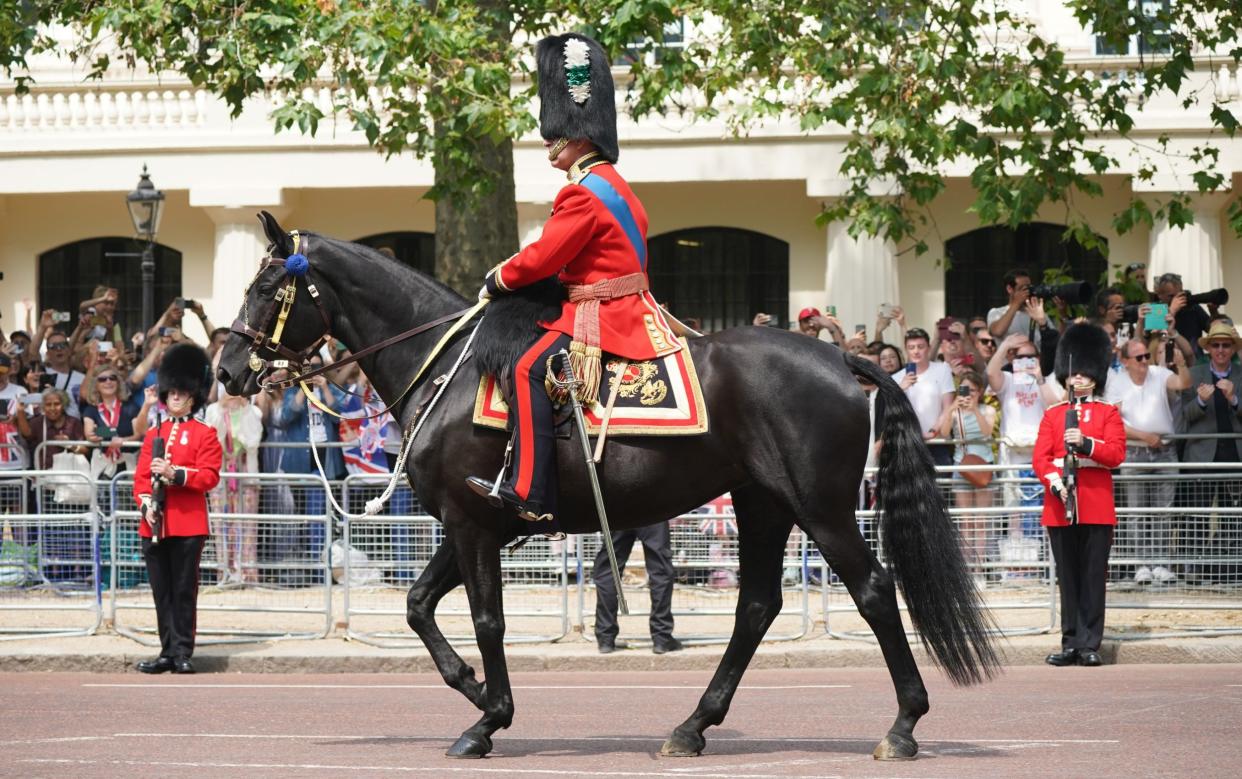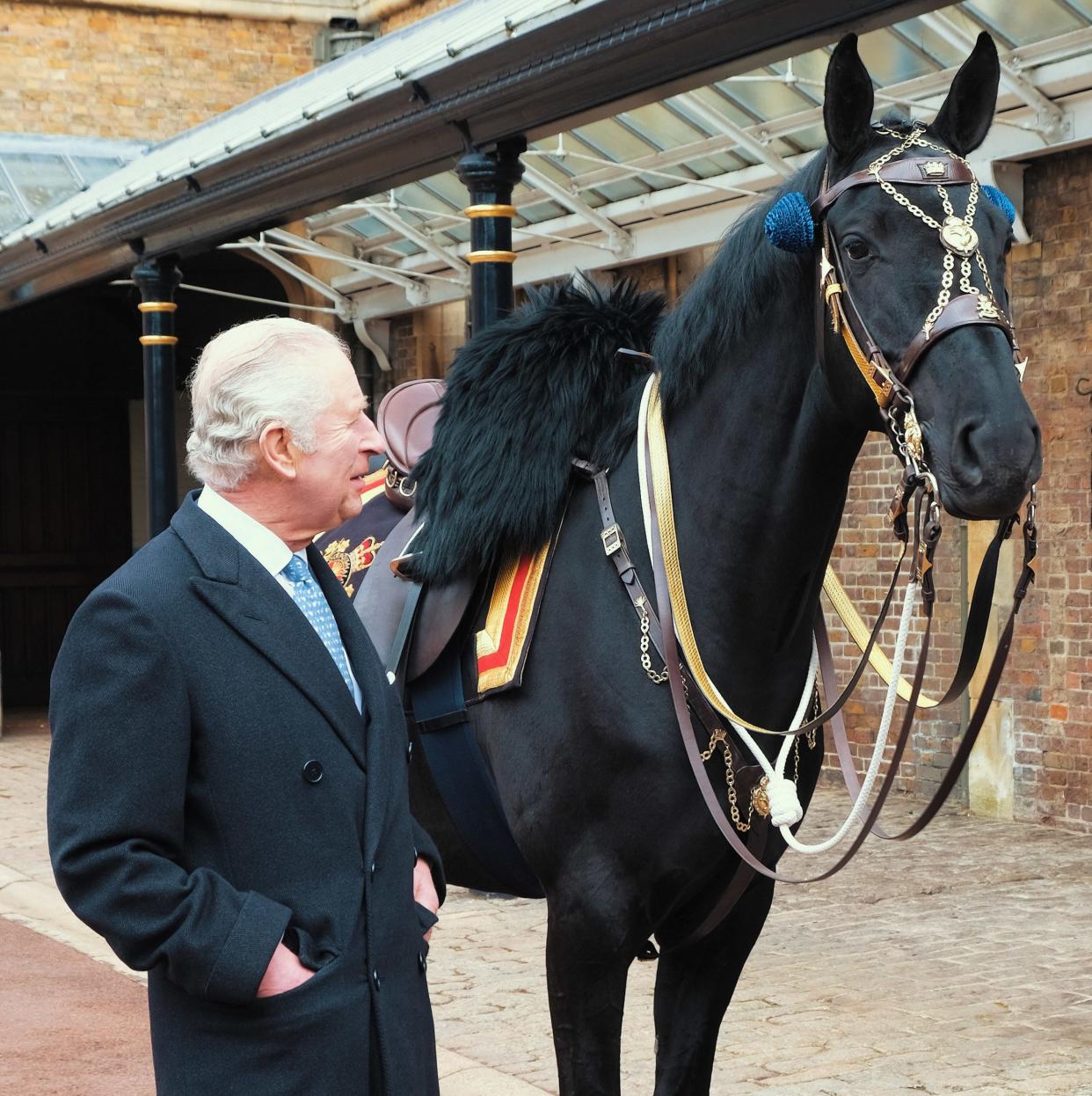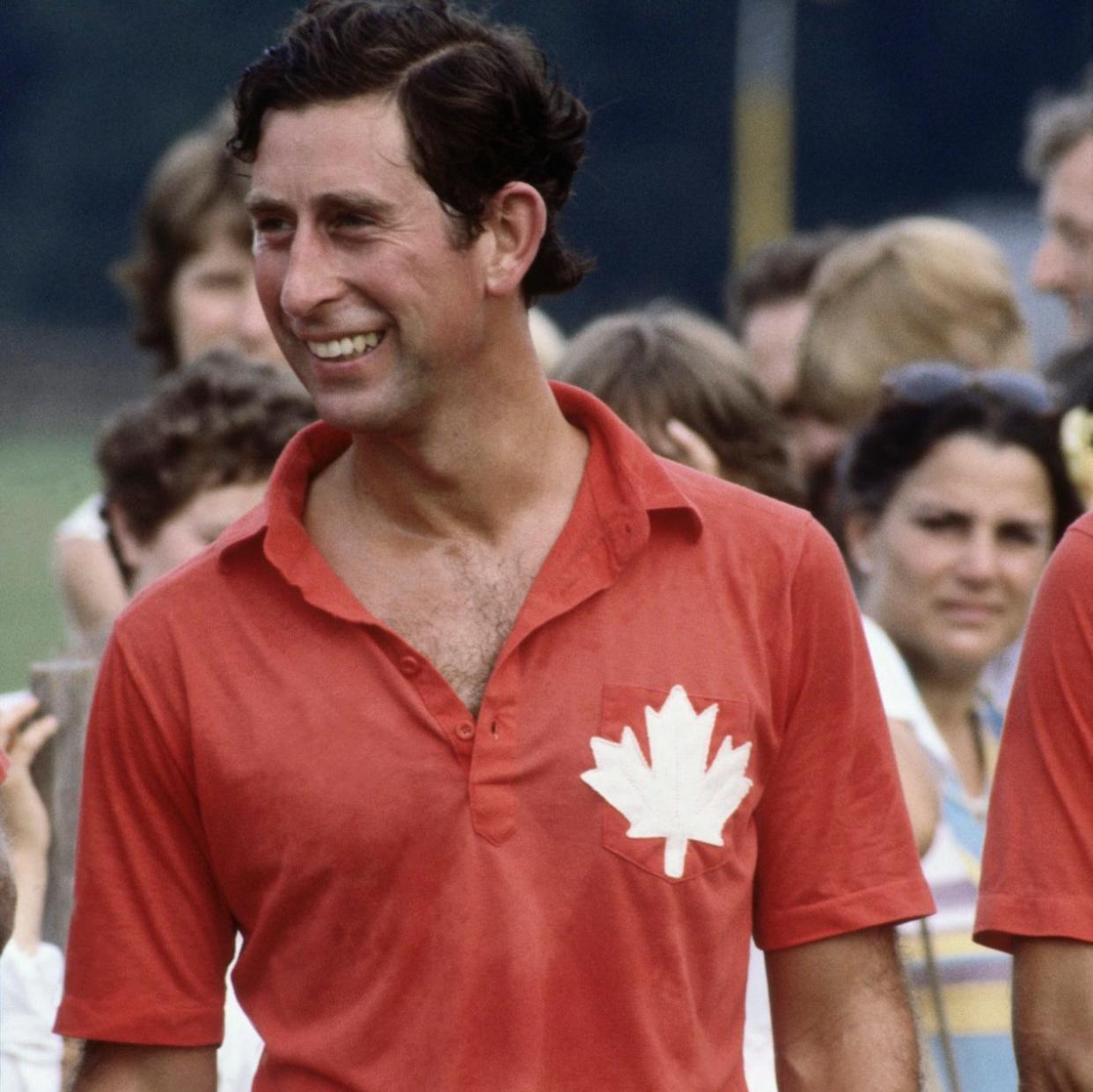How the King’s favourite horse will show his return to strength in Trooping the Colour

There is no relationship more ancient or distinguished than between a great leader and his steed. The Duke of Wellington had Copenhagen, Ulysses S Grant had Cincinnati, Gandalf had Shadowfax.
Since March of last year, just before his Coronation, King Charles has had Noble, an eight-year-old black mare. Last June, he rode this horse with remarkable control during his first Trooping the Colour, the first time the monarch had appeared on horseback at the event since the late Queen rode there in 1986.
Now it has been reported that the King plans to repeat the feat on Noble in June. Where earlier leaders rode for practical purposes, the King’s determination to saddle up is a show of strength, proof that the cancer he is fighting will not impede him from public life. The King, who returns to his public duties this week, is said to want to “lead from the front”. Leading the parade and taking the salute at the Trooping the Colour would be a highly visible return to duty.
The horse was given to the King by the Canadian Mounted Police last March, as part of a tradition dating back to 1904, showing the unity between the ‘Mounties’ and the Royal Family. Through the late Queen’s reign, the Canadian force presented her with a total of eight horses. Queen Elizabeth rode the first of these gift horses, Burmese, received in 1969, at the Trooping the Colour for 18 years.
Noble was named after an annual ‘Name the Foal’ contest held within the Canadian police. (A similar poll in the UK would presumably result in Horsey McHorseface, or some other less-than-regal moniker.) Charles met her soon afterwards at the Royal Mews, Windsor, where she is stabled. During last year’s Trooping the Colour, Noble looked skittish at times, perhaps fazed by the crowds and loud noises. Charles could be seen gently reassuring her.

Queen Elizabeth II was famous for her love of horses, and was a keen racegoer as well as rider. Horses she owned won all the Classics bar the Derby. Charles’s love of racing is less pronounced, but he has just as strong an equestrian streak. Like almost every member of the Royal Family, Charles learned to ride as a child, taught by his mother at the age of four. But where his sister Anne was fearless over the jumps – and would go on to compete in the Olympics – Charles was less bold, preferring to stay on terra firma. This was one advantage of polo, which he took up in 1961, when he was 13, at boarding school at Gordonstoun in Scotland. “I was all for it,” Charles has said of the sport that offered him an escape from the bullying that clouded his time there. “At least you stay on the ground.” By 1964, he was taking it more seriously, playing with his father Prince Phillip at the Household Brigade Polo Club.
“He is strong, and he has guts,” royal polo manager Major Ronald Ferguson once said. As the Prince of Wales, Charles endured several serious injuries. In Prince Harry’s 2023 memoir, Spare, he describes seeing his father fall during a match: “As a boy, I’d seen Pa take [a hard] fall, the horse giving way, the ground simultaneously smacking and swallowing him. I remembered thinking: ‘Why’s Pa snoring?’ And then someone yelling: ‘He’s swallowed his tongue!’” He said that this and other polo injuries had left Charles in “constant pain” in his neck and back, which he remedied with daily exercises, including handstands. In 1990, Charles fell and broke his elbow, undergoing surgery that was kept under wraps at the time, even if the subsequent sling was rather public. Despite the bumps and bruises Charles kept playing polo until 2005, having passed on the love for the sport to his sons.

Recent months have seen the King wrestle with more than a few tumbles, however. The disclosure of Charles’ treatment for cancer, as with the Duchess of Cambridge’s, has marked a drastic change in how the Royals report on serious illness. In previous years, such conditions have mostly been kept private. (For example, when George VI had a cancerous lung removed in 1951, his doctors did not even tell him he had cancer – it was euphemistically described as a “structural abnormality”. He died soon afterwards.)
Yet while the exact nature of Charles’ cancer has remained private, the King has faced up to his condition in public. In the statement released last week, Buckingham Palace said they were “sufficiently pleased with the progress made so far that the King is now able to resume a number of public-facing duties”. This is the modern way, where cancer is no longer taboo: sufferers can be open about the challenges the illness and treatment present while trying to maintain as normal an existence as possible.
The King’s determination to ride in public, then, might be seen as a reflection of a desire to lead by example. It is also a good PR opportunity for the Household Cavalry, after the incident last week in which five of its horses ran loose through six miles of central London, having thrown their riders. Newspapers and TV news were dominated by striking images of a blood-soaked grey, Vida, and a black horse, Quaker, running through some of the capital’s most famous roads. Whistleblowers have subsequently suggested the horses were being kept in filthy stables and only exercised for an hour per day. Reports on Monday suggested Quaker was “not looking good”. Though the Household Cavalry has responded by saying that it takes the health and wellbeing of its military working horses “extremely seriously” and that they are exercised daily, it could still use a boost.
If Noble can help restore faith in central London equine displays, as well as proving that the King can still lead his country through a physically and mentally demanding display, despite his diagnosis, she will prove well named.


